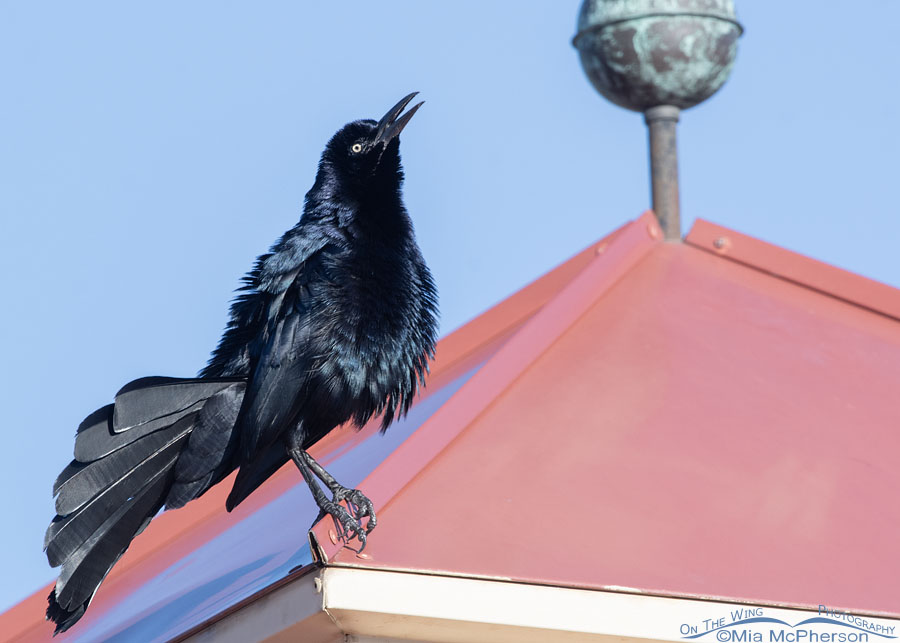This male Great-tailed Grackle caught my eye two days ago at one of my local ponds because he was displaying on a red-roofed cupola against a bright blue sky.
 Male Great-tailed Grackle on a February morning – Nikon D500, tripod mounted, f8, 1/500, ISO 500, +2.0 EV, Nikkor 500mm VR with 1.4x TC, natural light
Male Great-tailed Grackle on a February morning – Nikon D500, tripod mounted, f8, 1/500, ISO 500, +2.0 EV, Nikkor 500mm VR with 1.4x TC, natural light
The Great-tailed Grackles that reside near me are year-round residents, but I don’t see them as often during the winter months. The grackles are starting to show up more frequently now as it gets closer to spring. We have been having a warmer, less snowy winter this year compared to last winter.
This adult male Great-tailed Grackle was in the company of a male grackle who hatched last year. That male had browner plumage and lacked the gorgeous bluish-purple iridescence that this male has. Although I photographed the younger male, today I wanted to share this male’s photo.
The range of Great-tailed Grackles is expanding; they are showing up further north now than their historical range. The Great-tailed Grackle’s range expansion is attributed to their behavioral flexibility, persistence in overcoming challenges in new environments, and adaptability to urban and arid habitats. These traits have enabled them to thrive in human-altered landscapes, significantly extending their geographic range over the past century.
When I moved to Utah in 2009, I didn’t see this grackle species in the numbers or frequency that I do now.
This displaying male Great-tailed Grackle is only getting started on his spring displays. I enjoy photographing the male grackles displaying, and the females seemingly ignoring the displays in the spring. The males are challenging to expose properly because of their dark plumage, but I like challenges. Always have, always will, as long as I have a camera in my hands.
Life is good.
Mia
Click here to see more of my Great-tailed Grackle photos plus facts and information about this species.


Fascinating composition. The contrasting colors are eye candy. Great pic. Thanks Mia.
I love the photo colors and composition. Strangely I have not seen a single grackle in St George the past two days while birding in some of my usual spots while here. There are normally good size clusters at the parks and ponds.
There was a minor twitch last year that was set off by the arrival of four male Grackles. They hung out around a large pond for a few weeks then disappeared. I suspect it’s too cold for them here, or at least it’s too cold now. I love the wacky sounds they make.